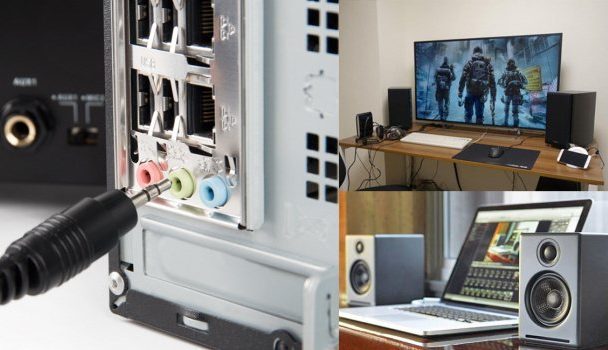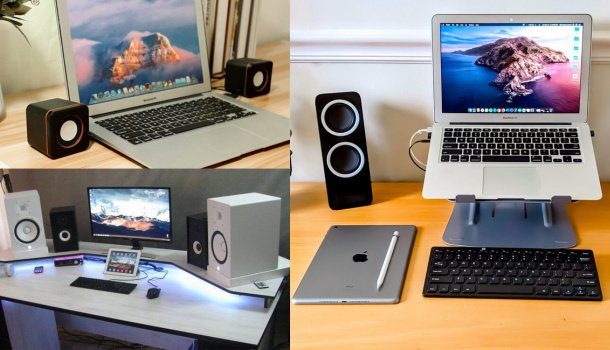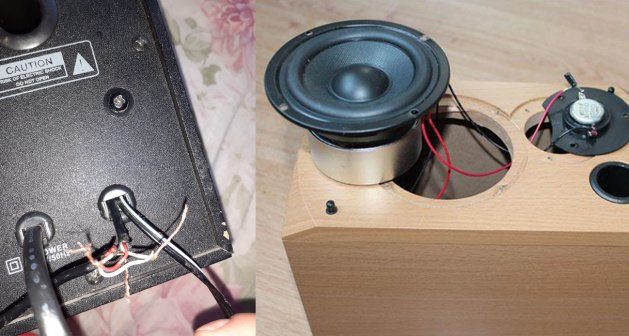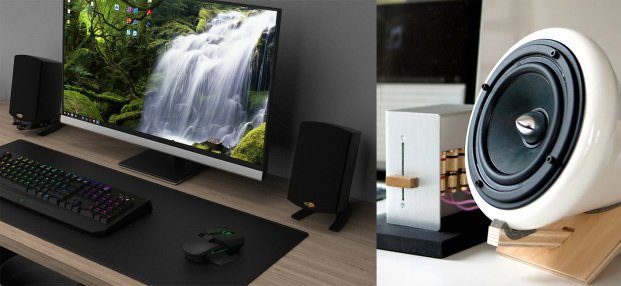Noise, hiss, speakers: 4 causes and effective solutions
Tips & Tricks
By hqt
2021.08.10Diagnostics: how to recognize the cause of sound problems?
Sudden interruptions in the work of the speakers can be taken by surprise, but before going to the service center, you should try to deal with this problem yourself. The main thing is to be patient. First of all, it is necessary to diagnose the equipment, understand the peculiarities of its connection and learn about the factors that affect the sound quality at the output.

After familiarizing yourself with the details that affect the correct operation of the speakers, you can already start checking for possible causal factors in order to find and eliminate the root of the problem. Depending on what kind of device we are talking about, the cause of the malfunction must be looked for in its features.
The main types of speak and what you need to pay attention to when diagnosing are in the table below:
| speak type | how to diagnose |
| Wired speakers connected to the computer | Check that the computer settings are working properly. First you need to listen to how the sound is displayed in the headphones, view the speaker parameters saved on the device, try to connect the speaker to another computer and compare the sound. It is also important to pay attention to the serviceability and integrity of the cable connected to the computer. If all else fails, you should test the sound card. |
| Wireless Bluetooth Speakers | Again, you first need to check the settings of the device to which the speakers are connected. It is worth trying to connect the speakers to another device, and pay attention to the purity of the sound. Next, you need to take a close look at the condition of the speakers: even minor damage, dust or dirt can have a significant impact on the sound quality. |
So, the reason why the speakers are noisy has been found, but what to do next? How to fix it and will you be able to cope on your own?
Computer problems
It often happens that the problem is not in the speakers, but in the PC. The first step is to check if the speakers are connected to the PC. This happens more often with wireless models. It is far from always possible to visually understand that they are synchronized with a PC. To determine the presence of a connection, you need to go to the audio settings:
- Click on “Start”.
- Go to “Settings” by tapping the gear on the left.
- Select “System”.
Go to the “Sound” section and check the “Output device”. And there will be all the speakers that are currently connected to the device. Laptops already come with “Speakers (Realtek High Definition)” by default. All other devices are third-party speakers.

If the computer does not see the device, you need to remove the cord from the corresponding port and insert the cable from the speakers into the PC again. If the computer does not see the wireless speakers, they must be synchronized. To do this, take the instruction of the sound transmitter and connect the devices as described in it.
Subsequent verification will look like this:
Viewing sound settings
View volume level. An accidental button press may have muted the sound or made it too quiet. This can be done in the same section “Sound” or by clicking the “Loudspeaker” icon on the taskbar.
Check for fresh drivers
Sometimes the “firewood” of the audio system does not work on a particular computer due to software failures of the system, which refuses to read them. Reinstalling the drivers solves this problem as well.
You can update firewood like this:
- Click on “Start” with the right mouse button.
- Select “Device Manager” from the drop-down menu.
- Go to the section “Sound, game and video devices”.
- Select “Realtek Audio”, and once in the drop-down window, go to the “Driver” tab.
- Click on the “Update driver” button.
If the problem was in the “firewood” of the sound card, the speakers start up. If it does not help, you need to connect the speaker to your computer and repeat this procedure with third-party speaker drivers. But when, even after these manipulations, the audio device continues to “glitch”, it means that the matter is not in the software part. We’ll have to carefully examine both devices.
Sound card connector problems
If the reason lies in a broken sound ear, contacting the service is inevitable. There, specialists will check and, possibly, replace the card with a new one. It often happens that the sound starts to junk precisely because of obsolescence or unsuitable sound card.
The problem is in the wires
In order for the speakers to start making noise, a sharp movement or accidental pinching is enough. To understand that something is wrong with the cord, you can look closely
- To protruding wires
If you can see, the problem is clearly in them.
- To reshape
The flattening shows that somewhere the cable has been transmitted and, possibly, thin wires have been torn.

Speaker problem
It also happens that the problem lurks inside the speakers themselves. Not all of them are shock-resistant; if they fall, the arrangement of parts may be disturbed. This could cause problems with the resistor, speakers, or amplifiers.

If the device appears to be cracked, it is more than likely that the problem is caused by a fall. You can also understand that the problem is lurking in the acoustics itself, if you work out all the possible options by the method of elimination. When the computer works fine with other speakers, and the connection cord is visually intact, then the problem is in the specific speakers.
You cannot solve this problem on your own – you will have to contact the pros for service repair. They will open the device, look at the integrity of the parts and replace the broken ones.
Basic inspection steps for testing and correcting each item
- Checking compatibility and connection response;
- neat cleaning from dust and dirt;
- external examination, search for missing elements;
- search for breaks, creases, other damage.
When faced with audio problems with a speaker, it is important to carefully study the issue and approach the problem with knowledge of the matter. It is better to double-check the same item a couple of times, testing it for serviceability or malfunction, than, without examining it, start repairing a completely working mechanism. In addition, you should not start “treating” hissing speakers on your own, without consulting a specialist before that, because there is a great risk of losing the manufacturer’s warranty.
Don't miss out!
Get an exclusive customized solution.
Subscribe to our newsletter and receive notifications of new posts on our blog.

